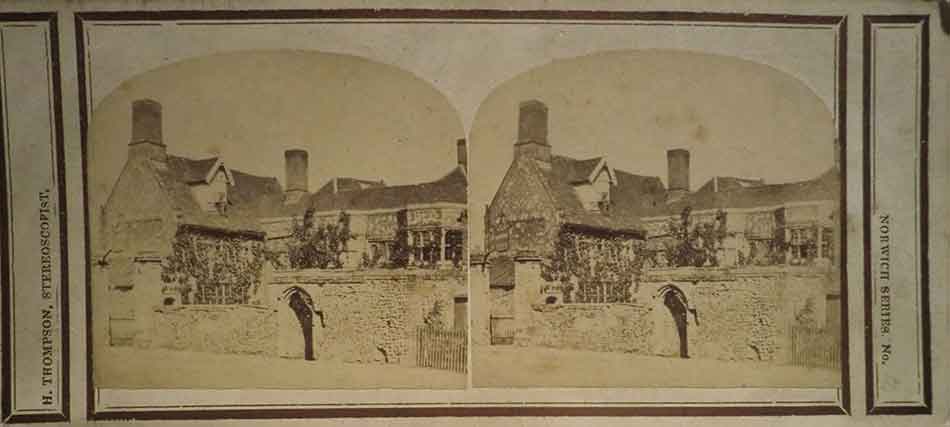1840 - 1860
Daguerreotypist, spectroscopist, photosophical instrument maker,
medical galvanist and electrotypist
The Thompson family lived in Norwich city centre at 10 White Lion Street, where Henry’s father, John1, sold ladies’ and gentlemen’s fashionable boots and shoes which were made by his nine employees in Fakenham. Henry also operated from the White Lion Street premises and in the 1851 Census, when he was just 20 years old, he described his occupation as ‘Photosophical Instrument Maker’. By 1856 Henry had moved on and advertised his Photographic Institute at St. Stephen’s Gates, Norwich. He placed the advertisement on 24th, December 1856.
NORWICH PHOTOGRAPHIC INSTITUTE
ST. STEPHEN’S GATES.
MR. THOMPSON
Returns his sincere thanks to the Nobility, Clergy
and Gentry, for the extensive patronage with which
they have favoured him, and he takes this opportunity of
informing them, that he has received a Choice Assortment
of ELEGANT CASES, FRAMES, &c., for PORTRAITS
suitable for CHRISTMAS PRESENTS. All Portraits
taken by his process are as durable as any other work of
art. Every improvement which scientific research or prac-
tical experience may suggest, is immediately adopted in
this establishment. Portraits on Paper, finished in the
highest style of art, from Fifteen Shillings. Portraits on
Glass from One Shilling. Portraits, Groups, Views, &c.,
taken for the Stereoscope. Stereoscopes and Photgraphic
Apparatus at the Lowest Prices.

Henry Thompson, Stereoscopist
The Bishop's Palace
Stereograph, 1858
[Private collection]

Henry Thompson, Stereoscopist
Cloisters Entrance, Norwich Cathedral
Stereograph, 1858
[Private collection]
Sources and Notes
- John Thompson introduced gutta percha to Norwich society for use in making fashionable boots and shoes. The Gutta Percha Factory, established in London in 1845, imported gutta percha, and sold the purified product in England. As a thermoplastic material it was ideal for the shoemaking trade as it could be formed easily into soles needed for hand-made boots and shoes. .